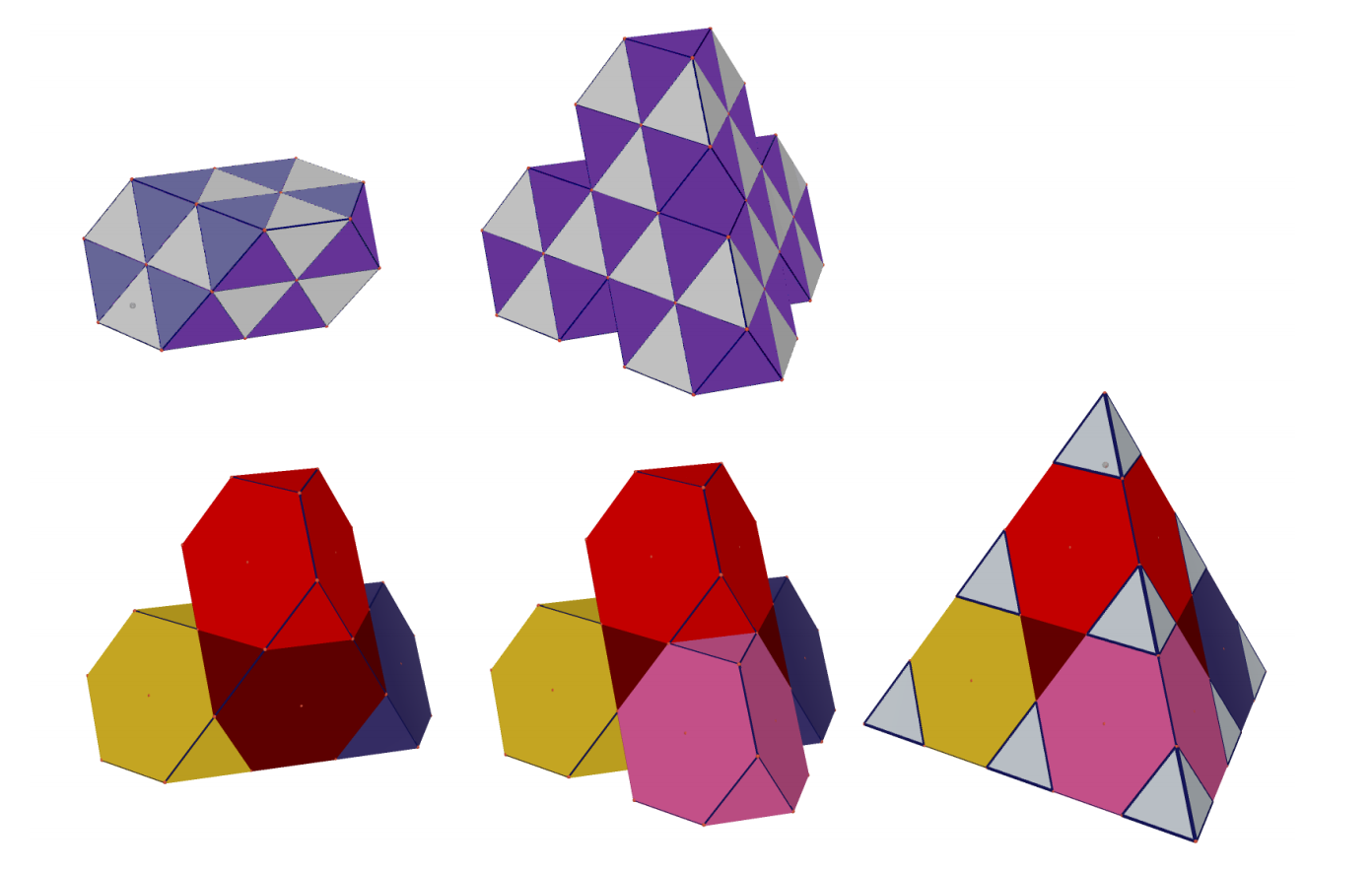© 2000-2023 - Enkey Magazine - All rights reserved
ENKEY SNC - VAT ID IT03202450924 / REA Code CA253701 - Phone. 078162719
The problem of the identification of geometric shapes that can tesselate the space dates back to two thousands years ago. Many infact wondered in the centuries if the space can be fully filled without leave gaps. Now maybe we find an answer thanks to the definition of the classes of tetrahedra that might be able to do it.
What are the tetrahedras?
In geometry we talk about polyhedra with 4 faces. The tetrahedra are covex geometric figures, which faces are triangular. They have 4 vertex and 6 edges.

Often one calles them even three dimensional simplices. Which means they are solid in 3 dimensions that have the minor number of vertex between the known solid geometric shapes.
The regular tetrahedra is one of the 5 platonic solid. It’s one of the regular polyhedra which faces are equilateral triangles.
The tessellation of the space
Like we said, it seems that the tetrahedra are between the geometrical figures able to tessellate and to fully fill up the space.
They are polyhedra that have the characteristic to not leave any bags and holes in the space where they are put. This happens when the faces of the tetrahedra match.
Finally, since the ages of Aristotele and Platone we find a solution to the question about how to fully fill the space.
Tetrahedra that adapt themselves
A team of 30 universitary students of the Massachusetts Institute of Technology, while working to the theories of the ancient phylosophers was able to reach a match progress to give a new life to a millenial research. Maybe, finally, they discovered how the shapes make the three dimensional space full.
Everything started with Aristotele that in a dialogue of the Timeo (360 a.C) tells how Platone, his maestro, discussed the ancient theory according to which the world is composed by 4 elements (soil, water, air and fire).
Platone assumed that these four elements are made by particles with a unique shape which correspond to one of the 5 regular solids.

The fire, for example, was made by particles like pointed pyramidal tetrahdedra. Even for this reason, the fire, according to Platone was thorny.
The idea of Aristotele
Aristotele objected that the particles might be able to fully fill the space. The phylosopher explained in his Sui Cieli (350 a.C.) that the elements can’t have a shape, right because the particles that compose them can’t be perfectly assembled between them.
Today we know that this isn’t true. The mathematical understood that by using 2 or more tetrahedra of different families, the space can be fully filled.
The tetrahedra families
The study discovered a new important element about the families of tetrahedra. They understood that they can be regulated in endless ways to make the internal corner smaller and other proportionally bigger.
With this discovery they understood how to use these geometric shape to fill up the space.
Tessellate the three dimensional space is anyway a very hard thing. For this reason the hunt is on.
In theory, any geometrical shape can be divided to find the right fragmentation that brings them to fully fill up the space. Since now though only the tetrahedra were “tested” for this.
The revolution is technologic
This revolutionary discovery was obviusly possible thanks to the technology.
Thanks to the computers and to the algorythms studied they arrived to the conclusion that any tetrahedra with dihedral corners can be used to fill the space.
Anyway, the scientific and matematic research isn’t arrived yet to a real theorem about it. Infact, even if the tetrahedra are useful to tessellate the space and they know that there are other solids which might be able to do it, it’s even true that some studies failed.
With the time we will discover what the space will bring to us and how to use all of it.
This post is also available in:
 Italiano
Italiano

